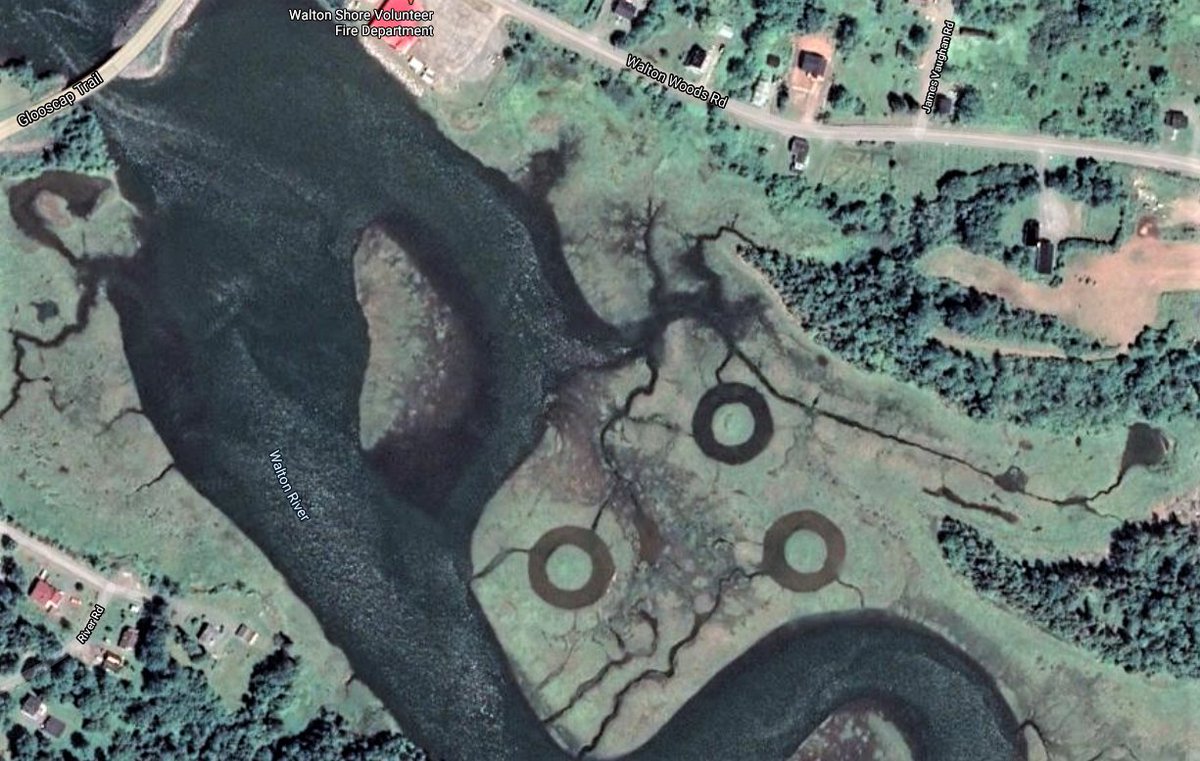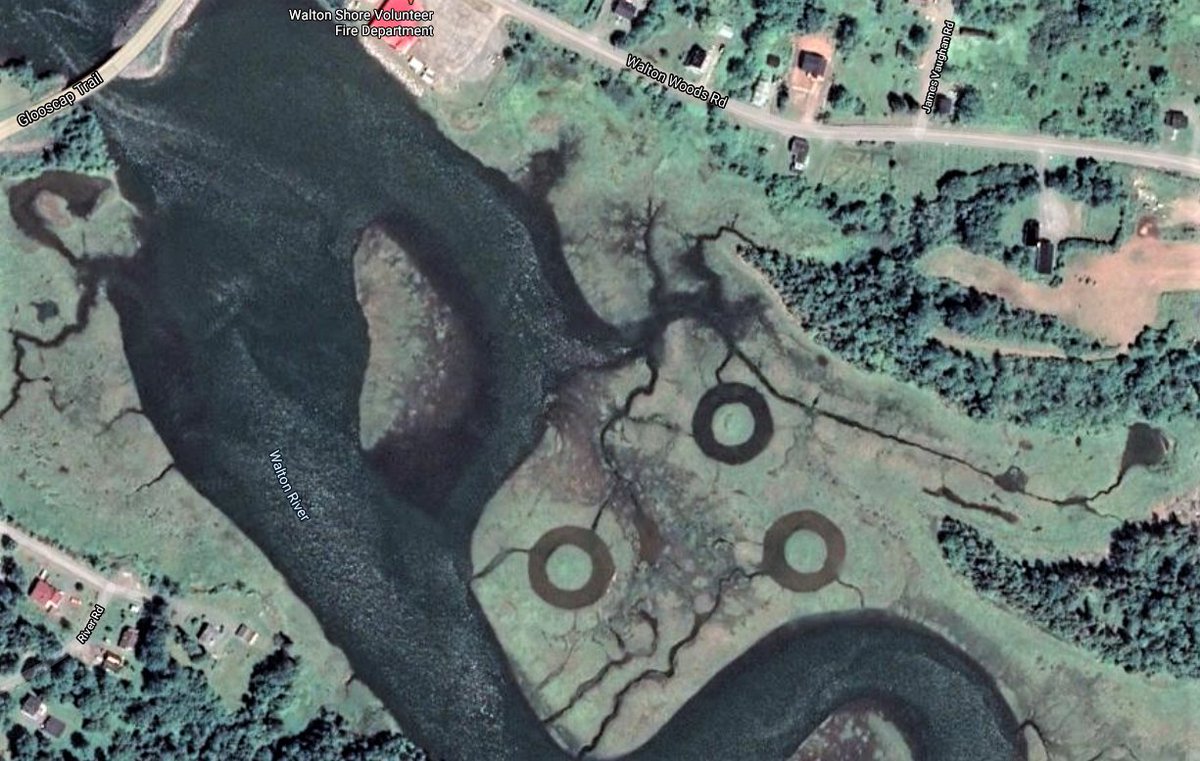We love getting questions about mining, minerals and geology! We were asked if we know what these intriguing circles are in #Walton, #HantsCounty.
#nspoli #cbpoli #novascotia @MLAChuckPorter @EastHantsNS #easthants

#nspoli #cbpoli #novascotia @MLAChuckPorter @EastHantsNS #easthants


The person who asked isn’t the only one who has noticed the circles. With satellite images so easy to access on the Internet, others have also noticed them, including the excellent staff @NS_Energy_Mines.
#nspoli #cbpoli @MLAChuckPorter @EastHantsNS
#nspoli #cbpoli @MLAChuckPorter @EastHantsNS

They investigated them in the early 2000s, thinking they could be sand/mud volcanoes.
A sand volcano is a cone-shaped landform created by liquefied sand being expelled from underground onto the surface.
#nspoli #cbpoli #novascotia @MLAChuckPorter @EastHantsNS
A sand volcano is a cone-shaped landform created by liquefied sand being expelled from underground onto the surface.
#nspoli #cbpoli #novascotia @MLAChuckPorter @EastHantsNS

The ejected sand accumulates in a cone shape. As the expelled sand slopes down, a crater is formed at the top, making it look like a volcano made of sand. From above, they look like circles.
#nspoli #cbpoli #novascotia @MLAChuckPorter @EastHantsNS
#nspoli #cbpoli #novascotia @MLAChuckPorter @EastHantsNS

Visiting the site revealed other interesting features. Just beside the circles on the shore is a long limestone outcrop with an abandoned adit (tunnel entrance) that's about 50 feet long. This was likely a small historical manganese mine.
#nspoli #cbpoli #novascotia

#nspoli #cbpoli #novascotia


There is also a small stream deeply cut into the mud flat downstream from the circles. About a meter down is the buried remnant of a rail line that ran from the gypsum quarries to the east, on Quarry Road, out to a loading dock by the bridge (see
#nspoli
https://twitter.com/MiningNS/status/1295681990612713472).
#nspoli

As part of their investigations, geologists often talk to residents to get the benefit of local knowledge.
#nspoli #cbpoli #novascotia @MLAChuckPorter @EastHantsNS
#nspoli #cbpoli #novascotia @MLAChuckPorter @EastHantsNS

One geologist who spent many years gathering info about historical quarries always went to the local post office and asked who the oldest person in the community was because that person often had first- or second-hand knowledge about historical sites.
#nspoli #cbpoli #novascotia
#nspoli #cbpoli #novascotia

In this case residents were able to solve the mystery. The circles were made by Ducks Unlimited to create little islands surrounded by water so ducks could nest and have protection from predators.
#nspoli #cbpoli #novascotia @MLAChuckPorter @EastHantsNS @AtlanticDucks
#nspoli #cbpoli #novascotia @MLAChuckPorter @EastHantsNS @AtlanticDucks

There is also a large, artificially-constructed wetland a little upstream. Kudos to Ducks Unlimited for their fine work.
@AtlanticDucks
@AtlanticDucks

But those of us who love solving a geological mystery are still a little disappointed that the circles were man-made, and not the result of geological activity!
#nspoli #cbpoli #novascotia @MLAChuckPorter @EastHantsNS

#nspoli #cbpoli #novascotia @MLAChuckPorter @EastHantsNS


• • •
Missing some Tweet in this thread? You can try to
force a refresh



























